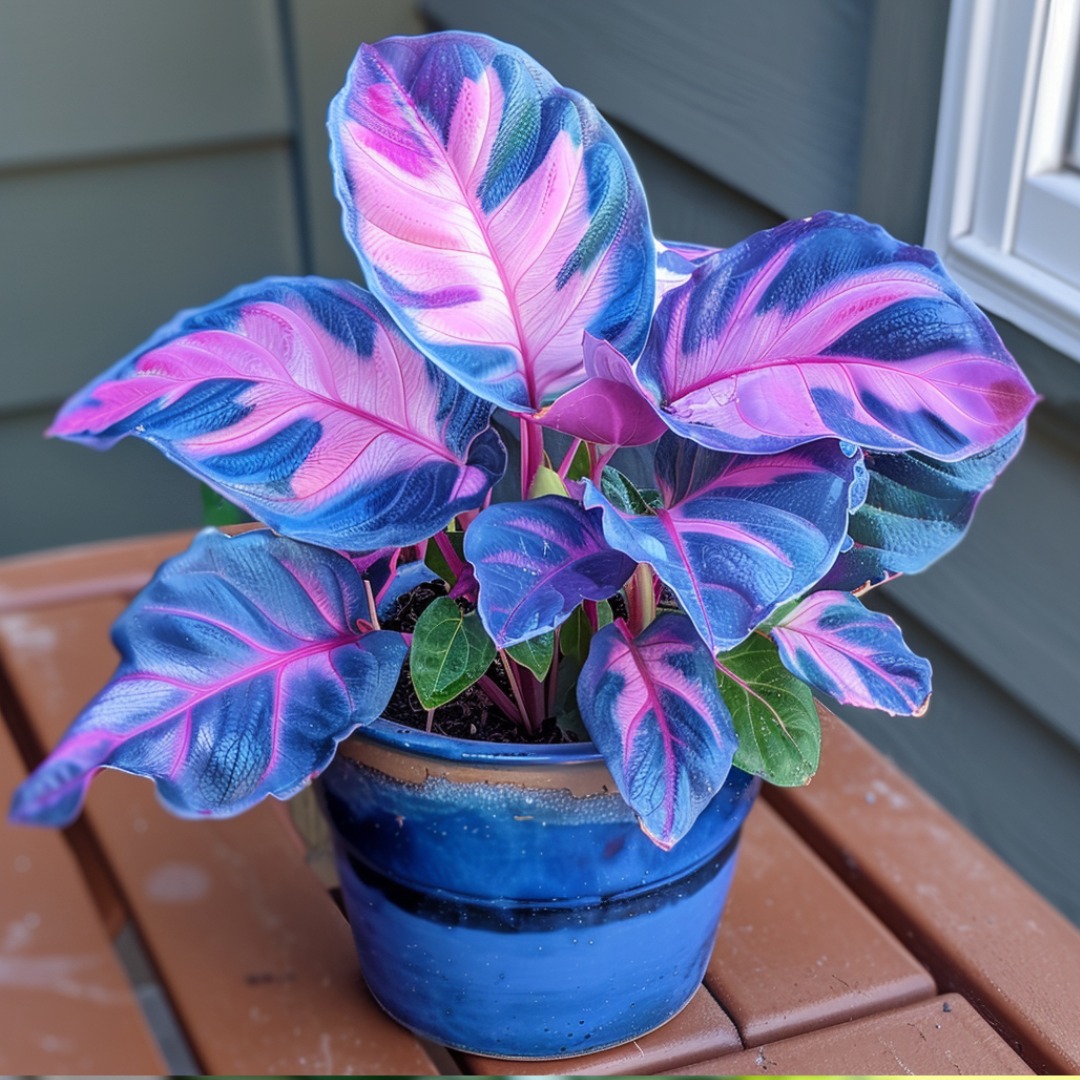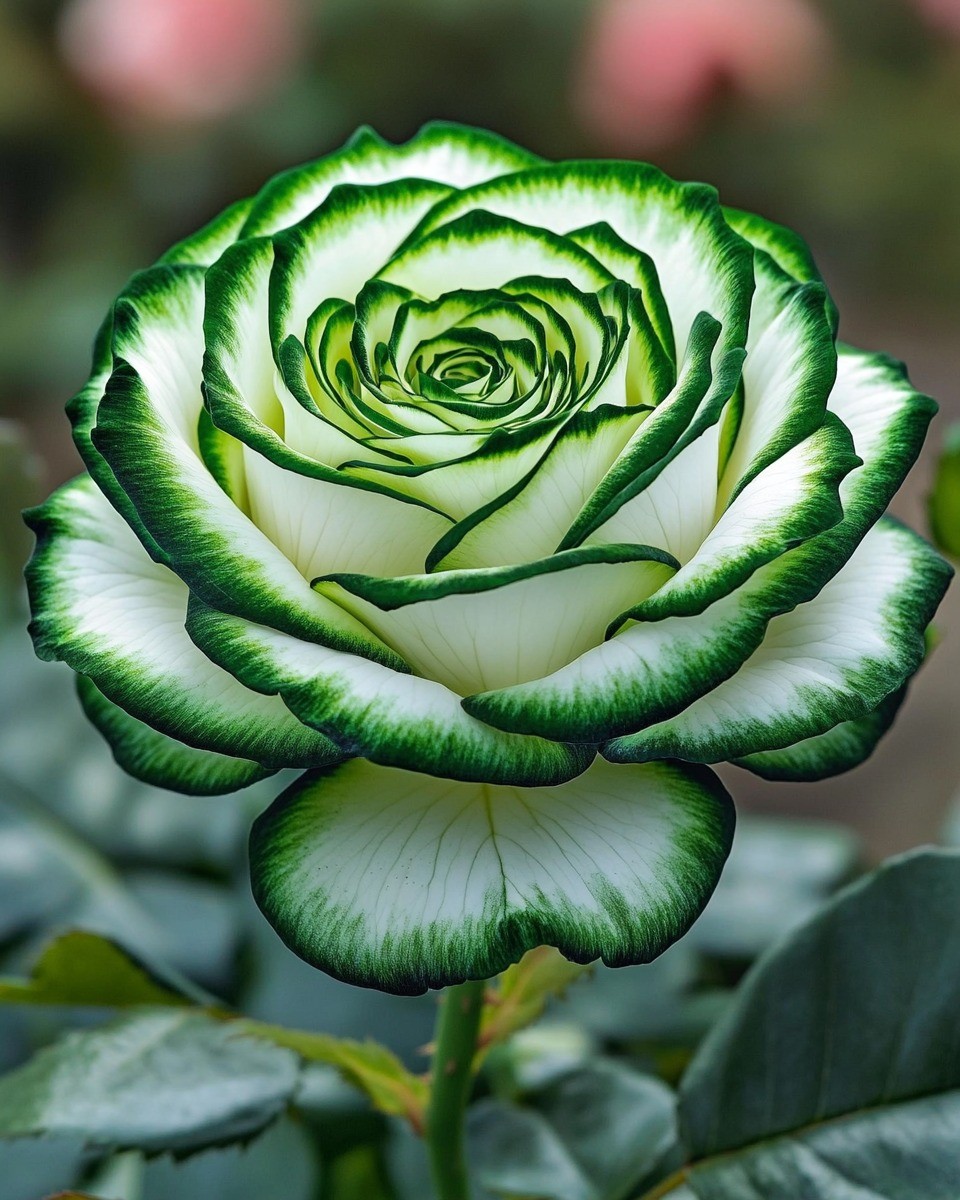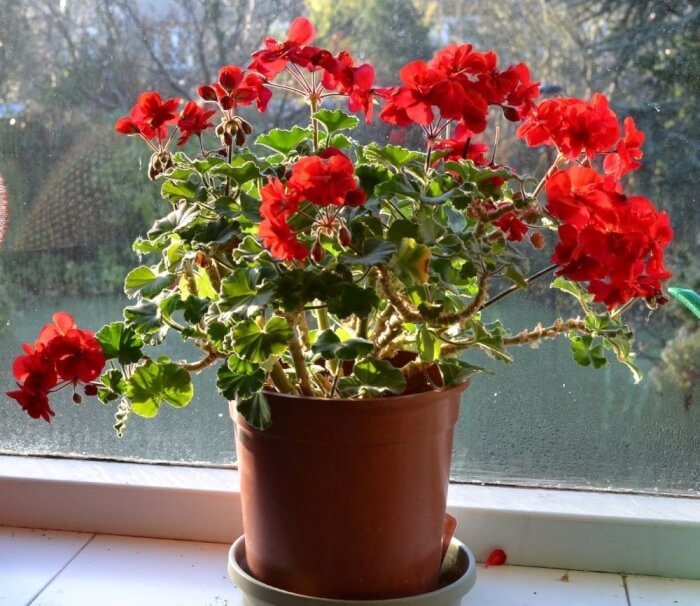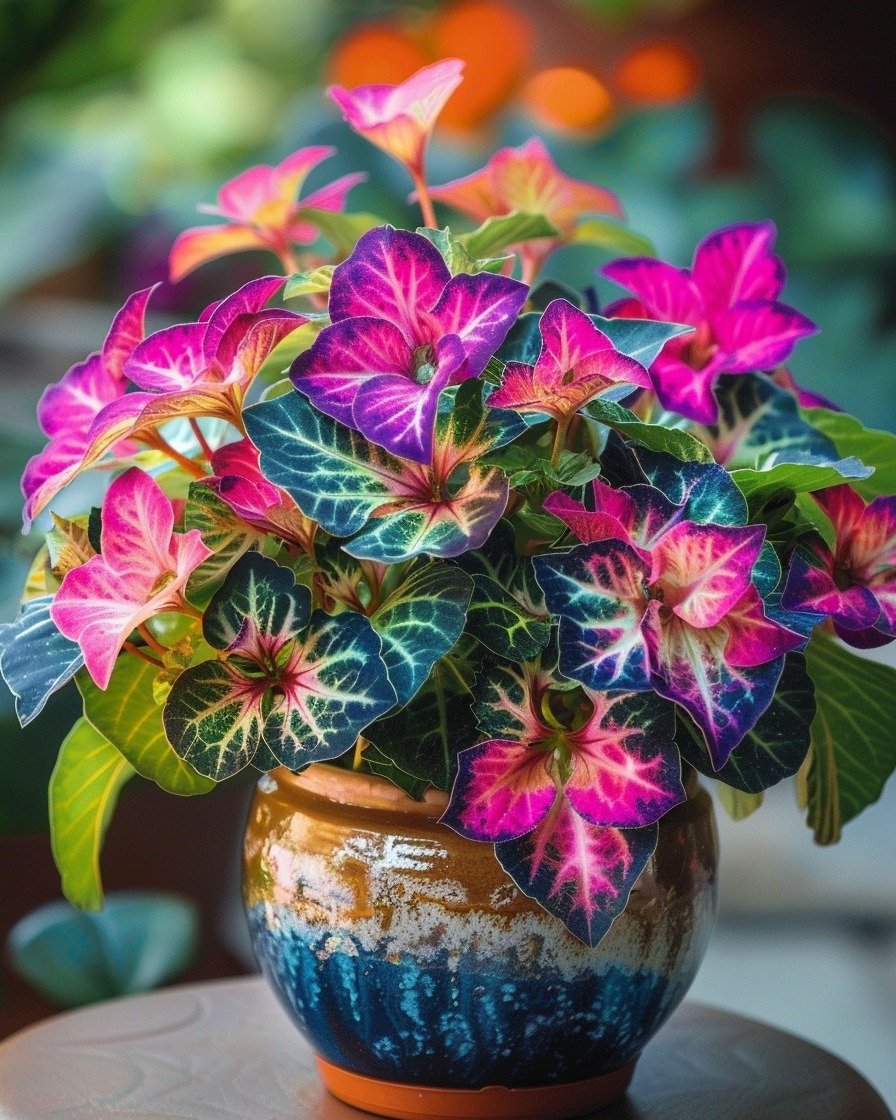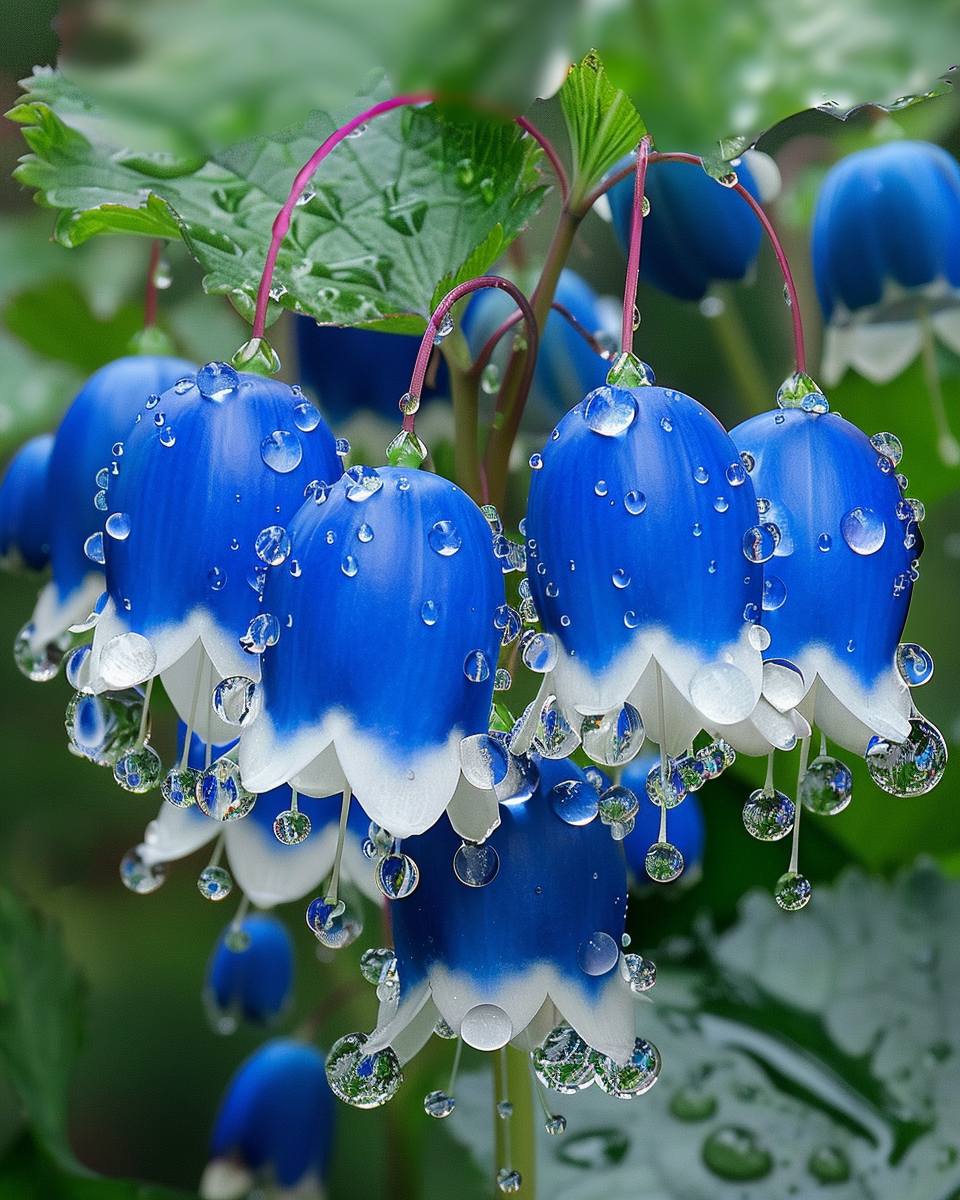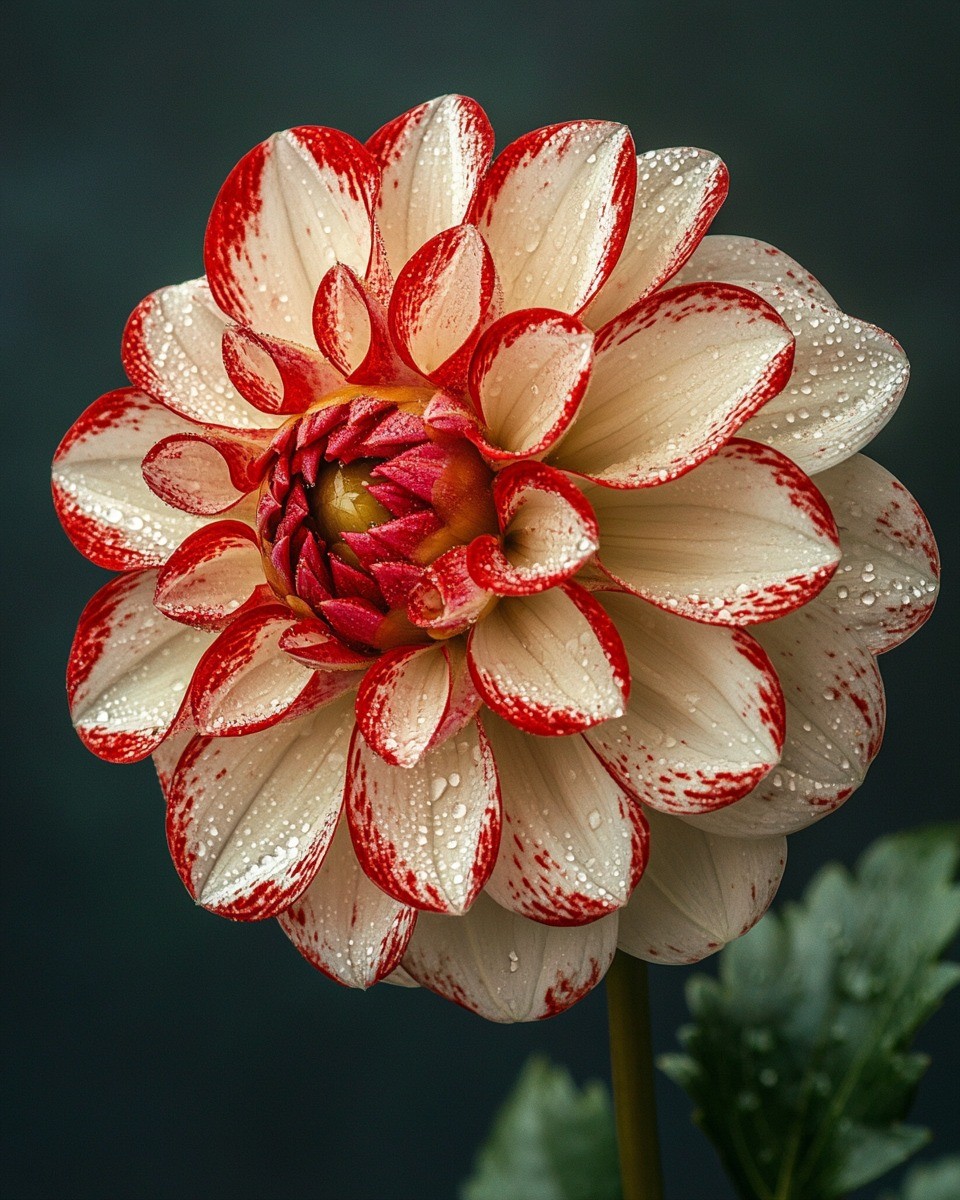These deer-resistant annuals are colorful, easy-to-grow, and won’t appeal to foraging deer.
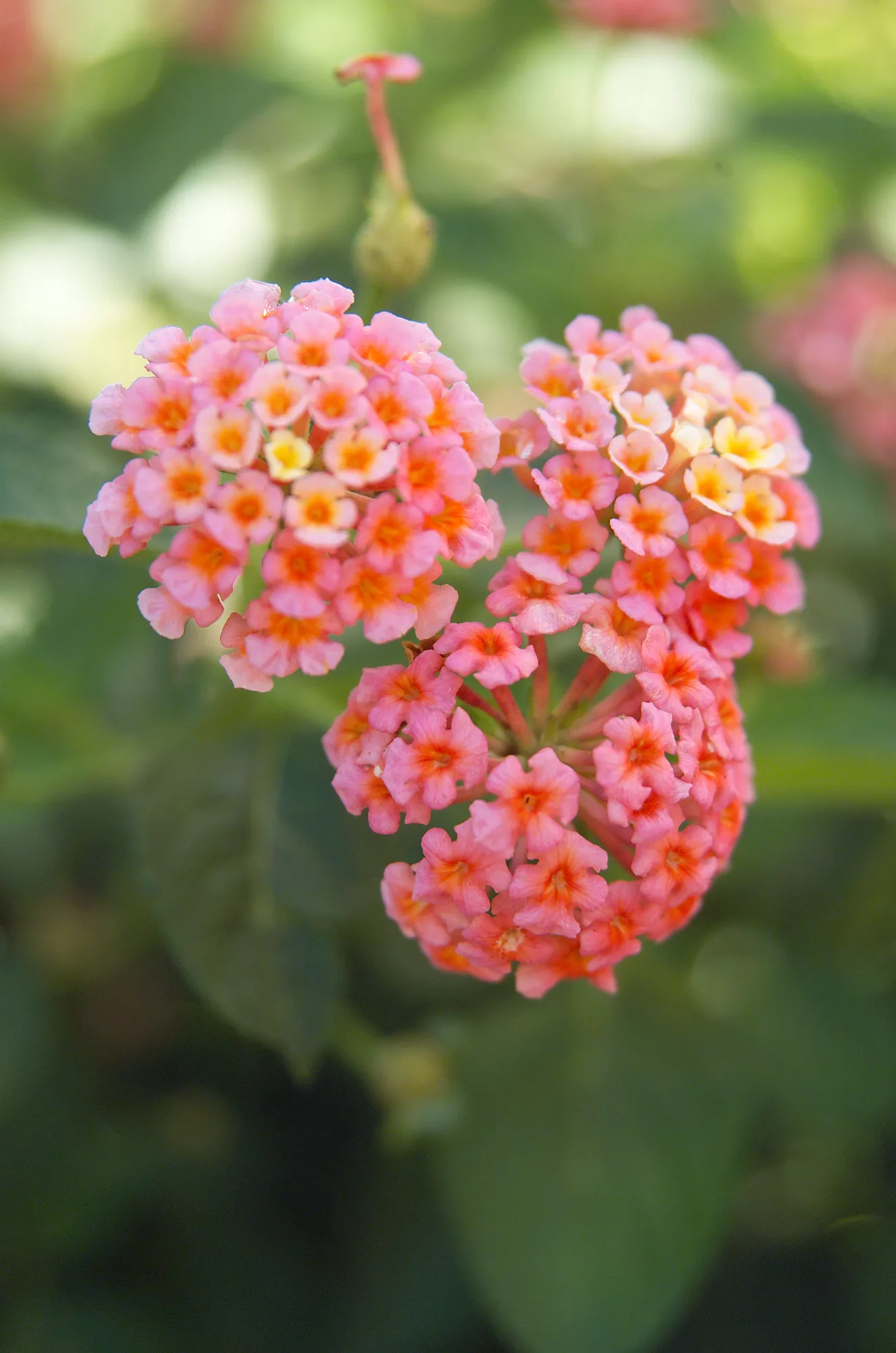
Colorful, deer-resistant annuals are a good way to fill your summer gardens and vases. While deer will eat just about anything if they’re really hungry, they do have preferences. Some plants don’t interest them as much, especially plants with hairy or fuzzy leaves or that are strongly scented.
The following annual flowers and foliage plants fall into this deer resistant category (a few are perennial in warmer climates but are usually grown as annuals). Select some to fill your beds and container gardens for non-stop color from spring to fall and let the deer go somewhere else for dinner.
Calendula
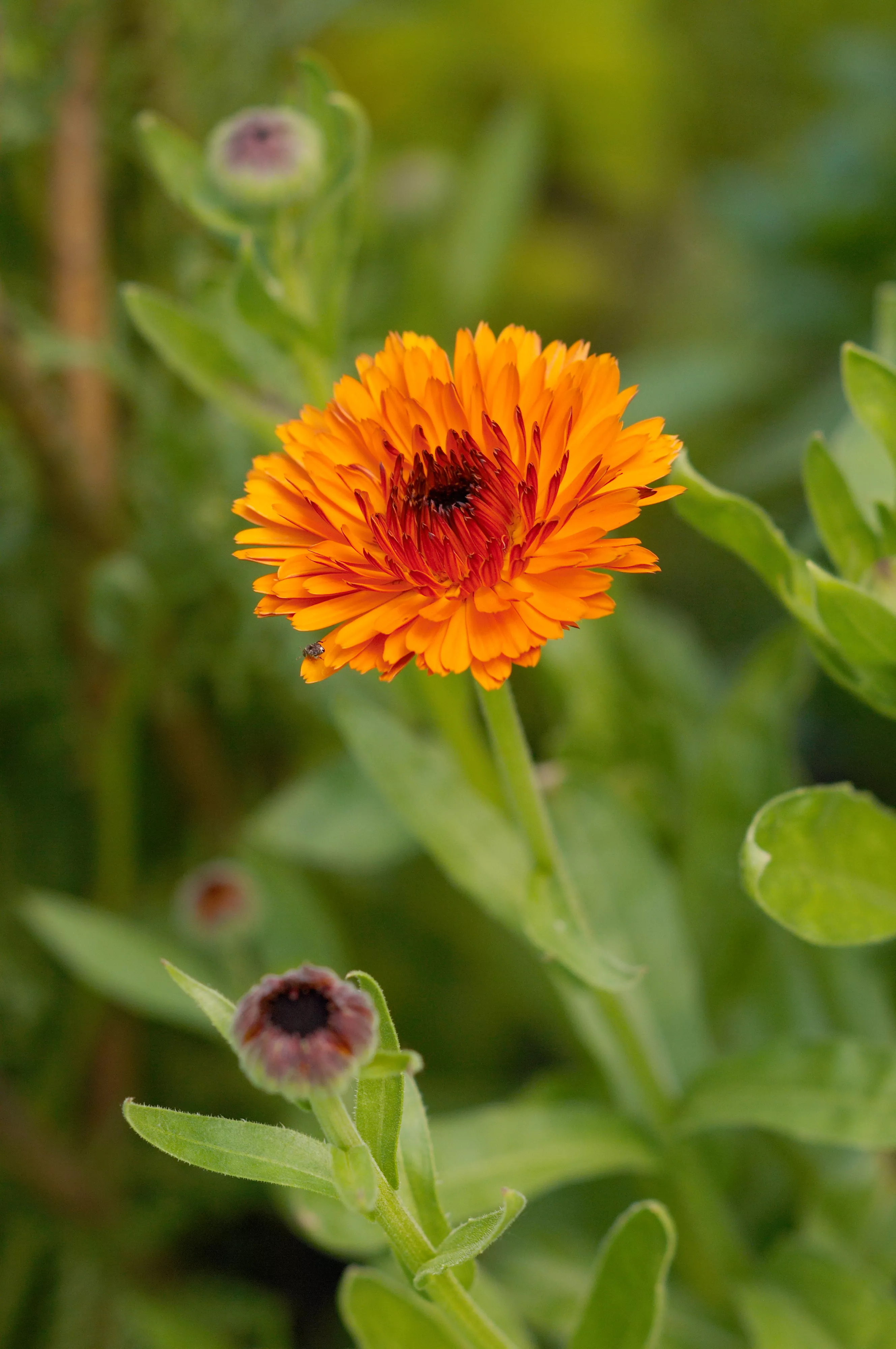
Sometimes called pot marigold, calendula produces cheerful flowers in shades of cream, yellow, and orange. While the flowers are edible—they make a colorful addition to summer salads—deer don’t like the smell of the foliage, so they rarely bother the plant. Shorter varieties can be planted along walkways, the front of a bed, or in a mixed container. Taller varieties make attractive cut flowers.
Name: Calendula officinalis
Growing Conditions: Full sun to part shade and moist, well-drained soil
Size: 1 to 3 feet tall, 1 to 2 feet wide
Spider Flower
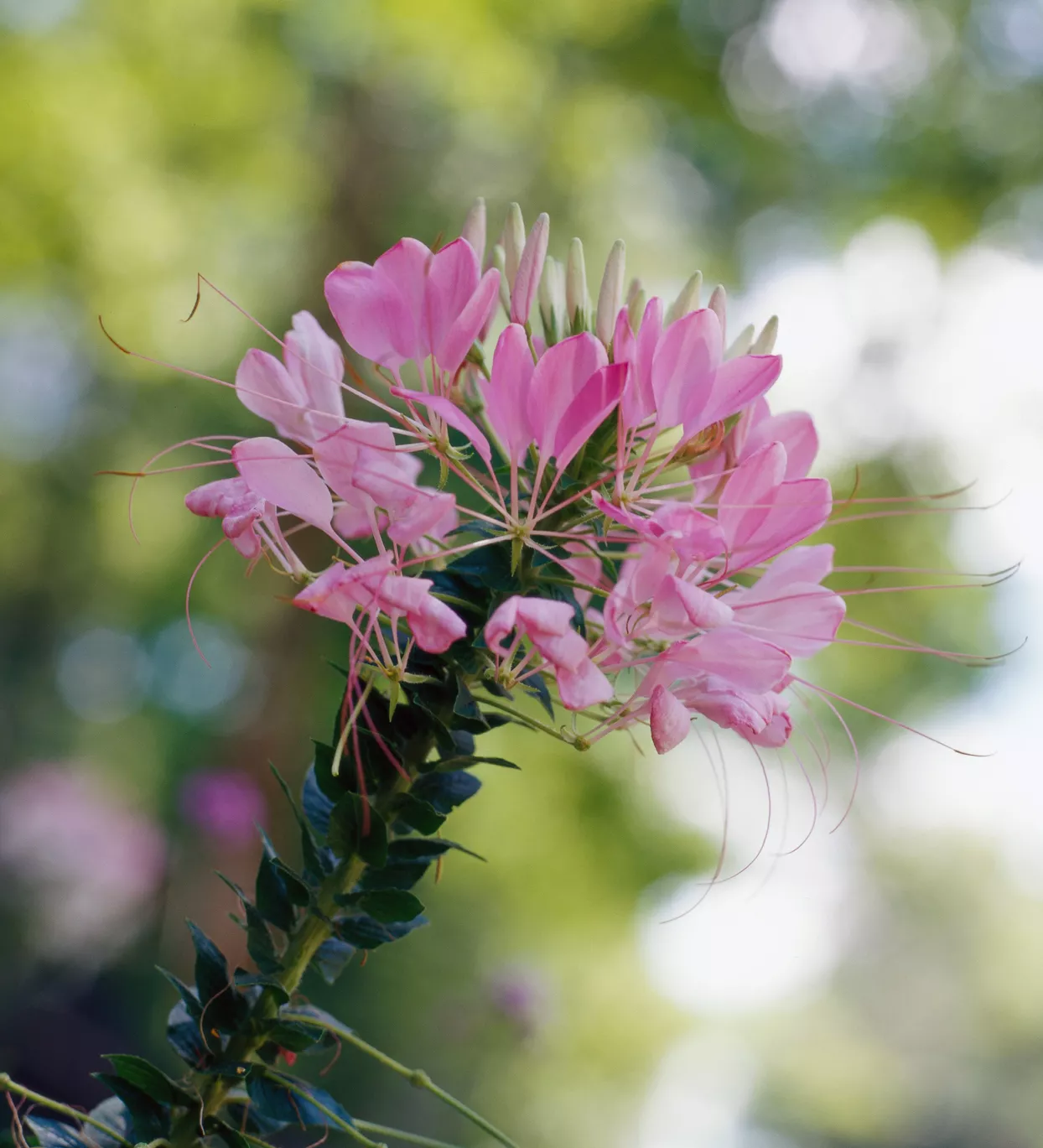
Pink, purple, or white spider flowers attract lots of pollinators, but deer hate them. Their large flower clusters give a tropical look to the back of a bed. Flowers continually form at the tops of stems, and old flowers are followed by narrow seed pods that give the plant an interesting spidery look. They often re-seed themselves when conditions are favorable.
Name: Cleome hasslerianna
Growing Conditions: Full sun to part shade and well-drained soil
Size: 1 to 5 feet tall, 1 to 3 feet wide
Ageratum
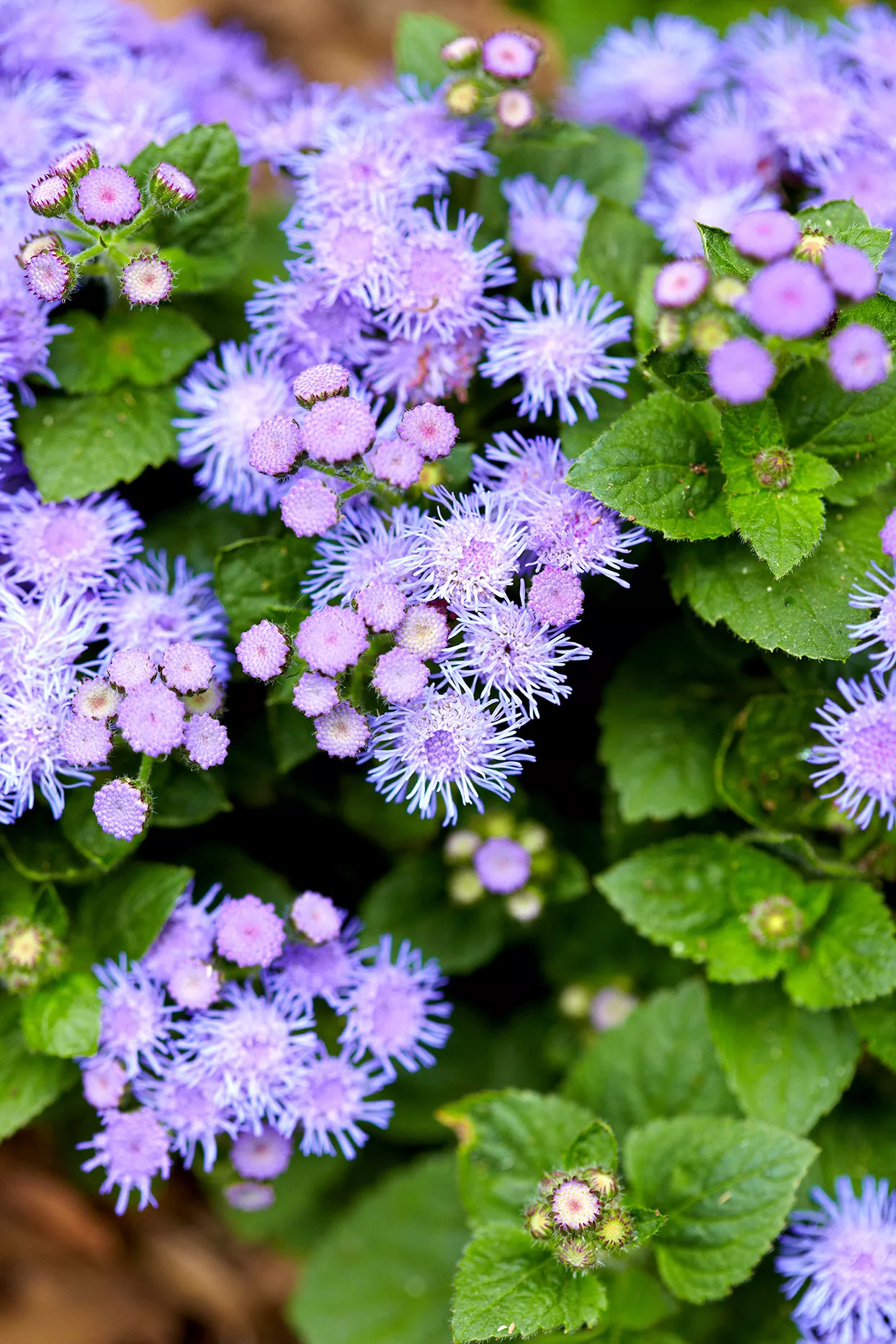
The fuzzy blooms of ageratum, sometimes called floss flower, add a soft texture to any planting. These non-stop blooming annuals come in shades of purple, pink, and white. They are easy-to-grow but a steady supply of moisture is important—they will wilt if they are allowed to dry out. While many selections are compact, perfect for edging a border, others are taller, and make lovely cut flowers.
Name: Ageratum houstonianum
Growing Conditions: Full sun to part shade and evenly moist, well-drained soil
Size: 6 to 36 inches tall, 6 to 18 inches wide
Annual Salvias
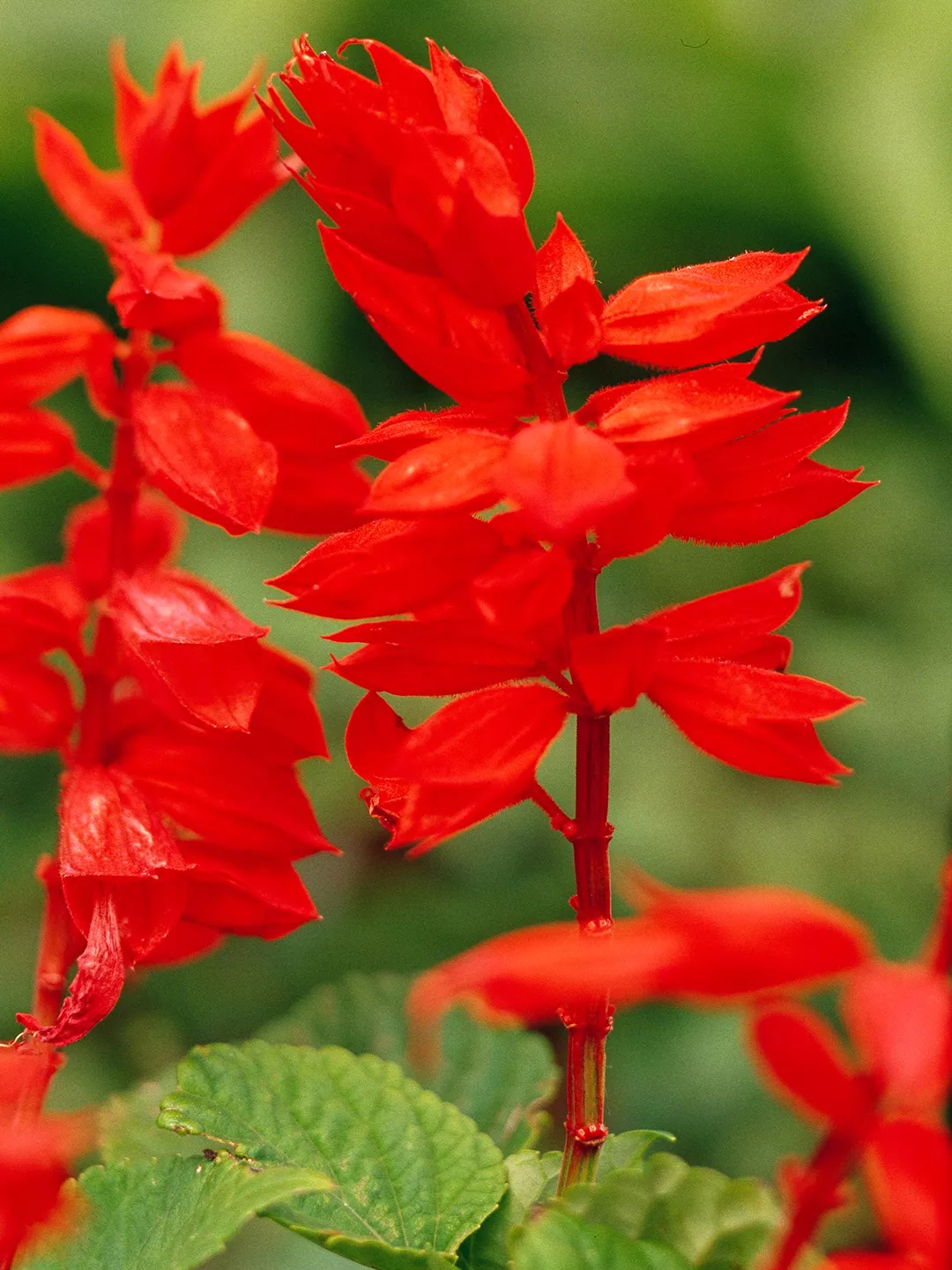
There are several annual species of salvia that come in a range of flower colors including white, pink, red, purple, and blue and they all lure pollinators to your garden. The flowers appear all summer long in densely packed upright spikes. They are particularly striking when planted in masses or drifts. Compact selections add a bold splash of color to container gardens.
Name: Salvia coccinea, S. farinacea, S. splendens, S. patens
Growing Conditions: Full sun and well-drained soil
Size: 1 to 5 feet tall, 1 to 2 feet wide
Flowering Tobacco
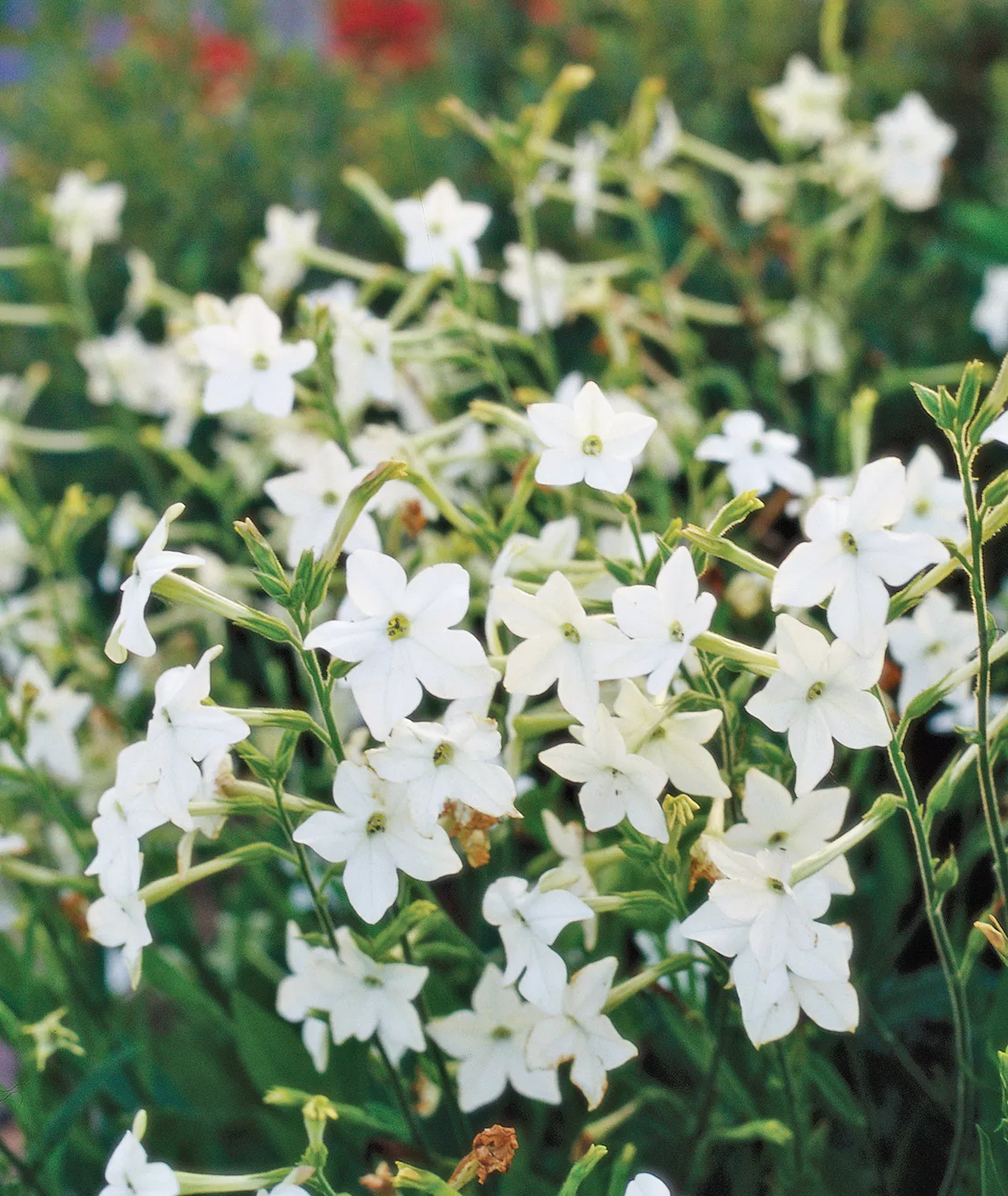
Flowering tobacco, also called jasmine tobacco, features clusters of fragrant white, pink, red, or purple flowers held on tall upright stems. While its jasmine-like scent is delightful, avoid planting these near nightshade vegetables like tomatoes and peppers because they are closely related and susceptible to the same viruses.
Name: Nicotiana alata
Growing Conditions: Part sun, full sun; moist, well-drained soil
Size: 3 to 5 feet tall, 1 to 2 feet wide
All parts of flowering tobacco are toxic if eaten by humans1 and animals2. No wonder deer leave it alone!
Snapdragon
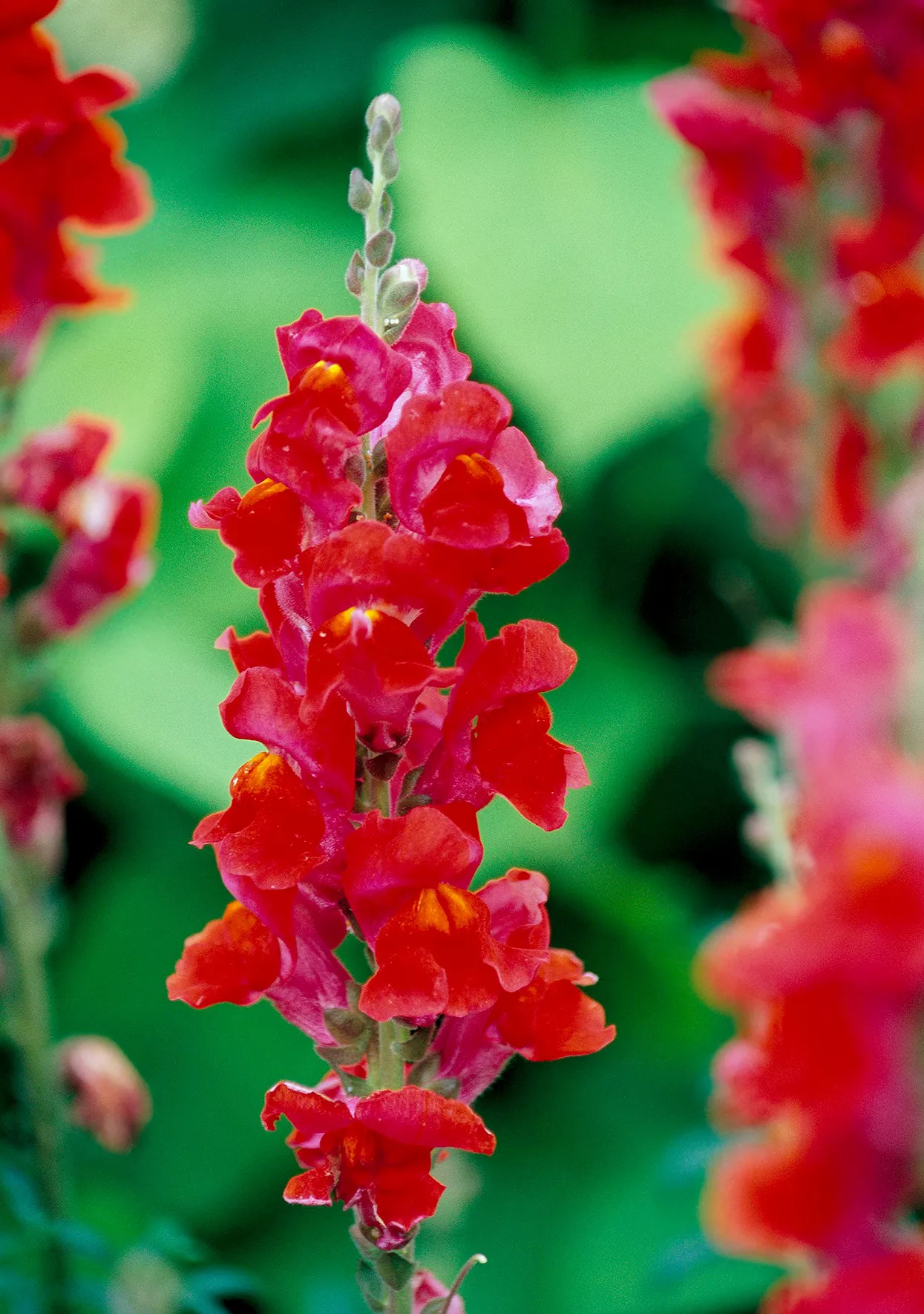
Snapdragons thrive in the cooler weather of spring and fall, producing flowering stems that support small flowers in shades of white, pink, yellow, red, orange, and purple. Each blossom resembles a tiny dragon’s head. These flowers add a colorful vertical accent to a border and are fantastic for cutting. As temperatures rise in summer, these deer resistant annuals take a hiatus from blooming, but flowering often picks up again when temperatures cool in the fall.
Name: Antirrhinum majus
Growing Conditions: Full sun to part shade and moist, well-drained soil
Size: 12 to 36 inches tall, 6 to 18 inches wide
Angelonia
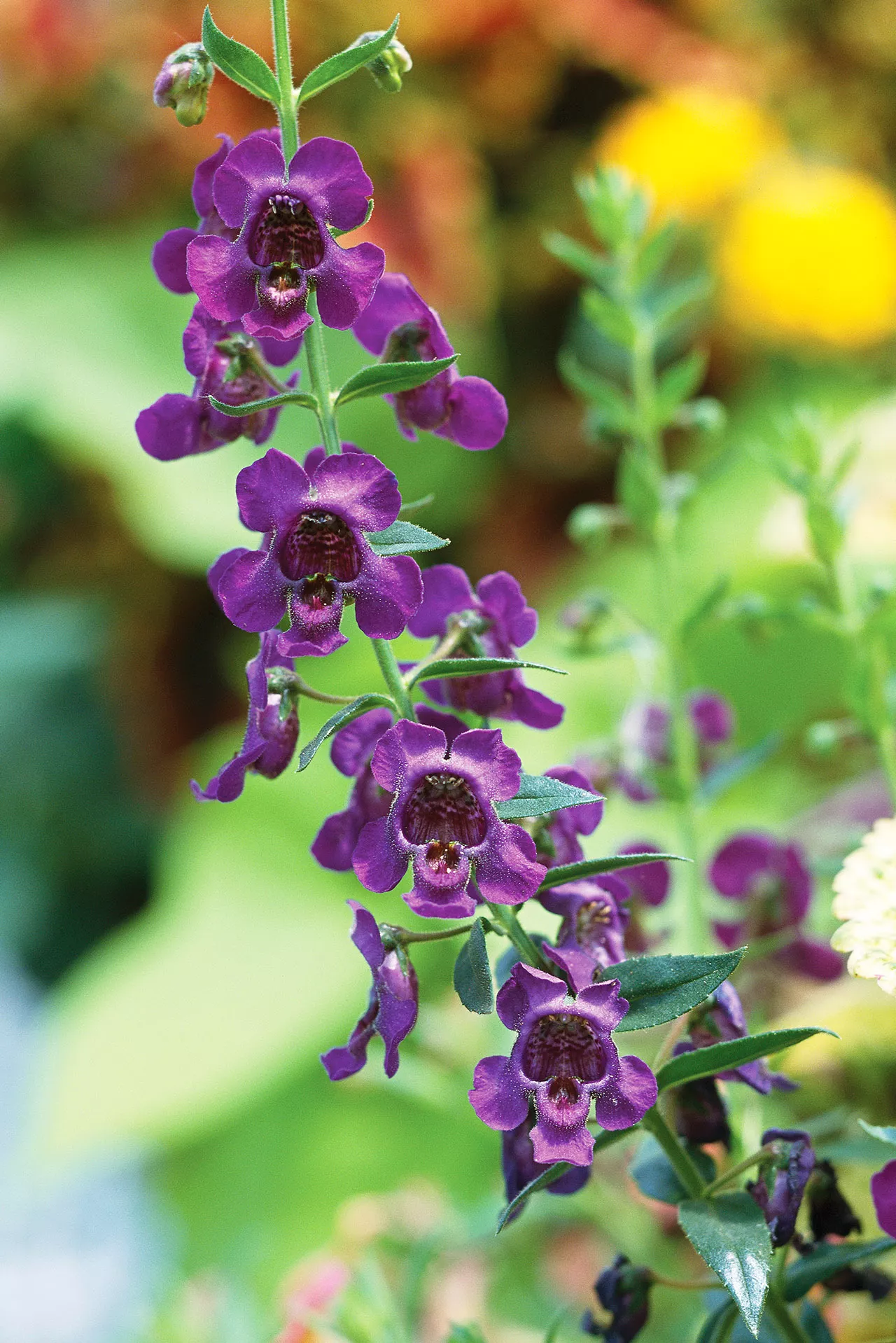
The small pink, purple, or white flowers of angelonia cover the bushy plant from early summer through fall and don’t require any deadheading. Flowers, which are often bi-colored, resemble small snapdragons. While it thrives with regular moisture, angelonia withstands both heat and periods of drought. It’s a great choice for container gardens or as an edging for beds.
Name: Angelonia angustifolia
Growing Conditions: Full sun and moist, well-drained soil
Size: 12 to 18 inches tall and wide
Globe Amaranth
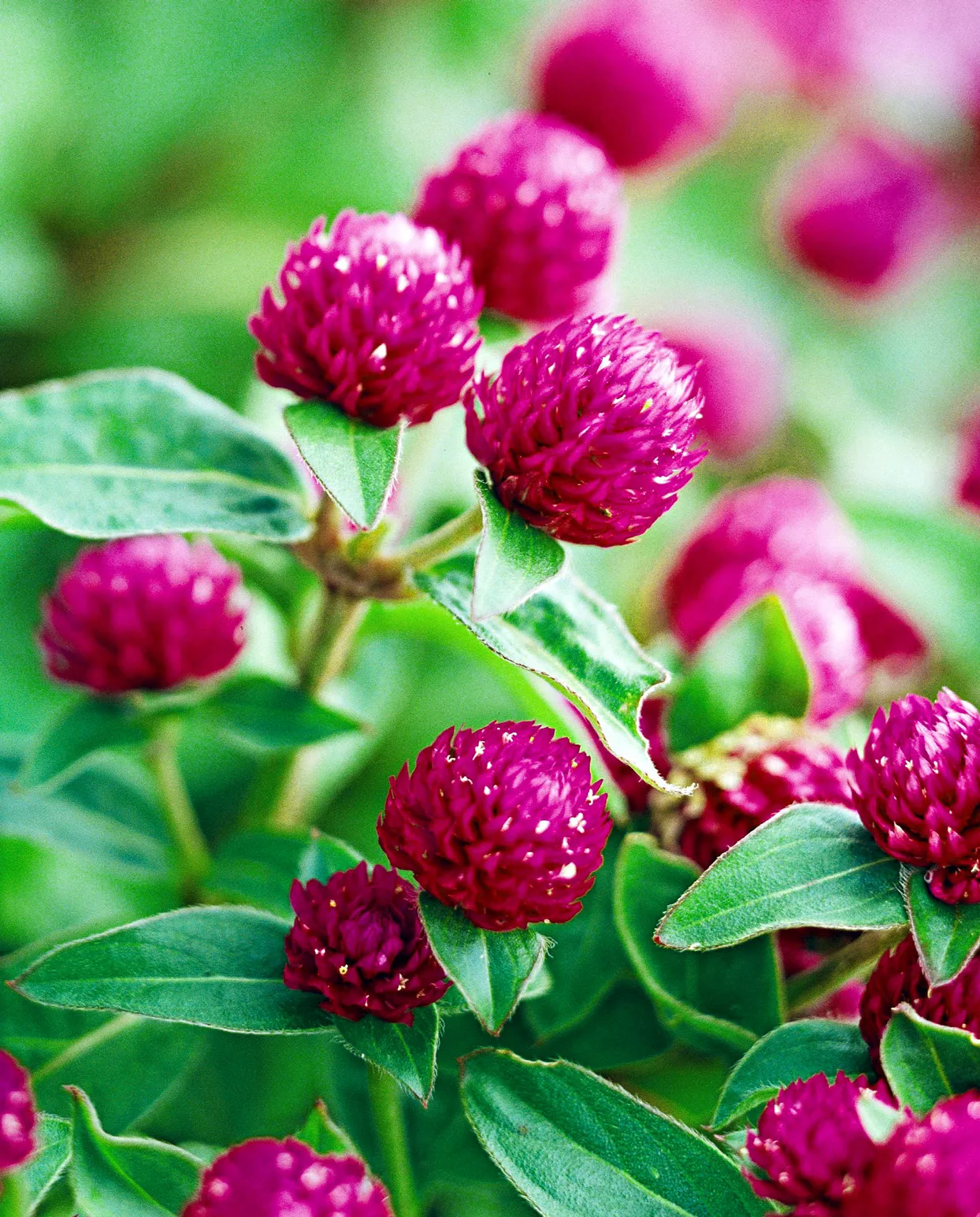
Globe amaranth is a carefree deer-resistant annual that produces perky rounded flower heads non-stop throughout summer. It attracts butterflies, tolerates drought, and makes a colorful addition to borders and container gardens. The flowers are great for cutting fresh and for drying. For a bushier habit, pinch back the new growth of young plants.
Name: Gomphrena globosa
Growing Conditions: Full sun and well-drained soil
Size: 1 to 3 feet tall and wide
Wishbone Flower
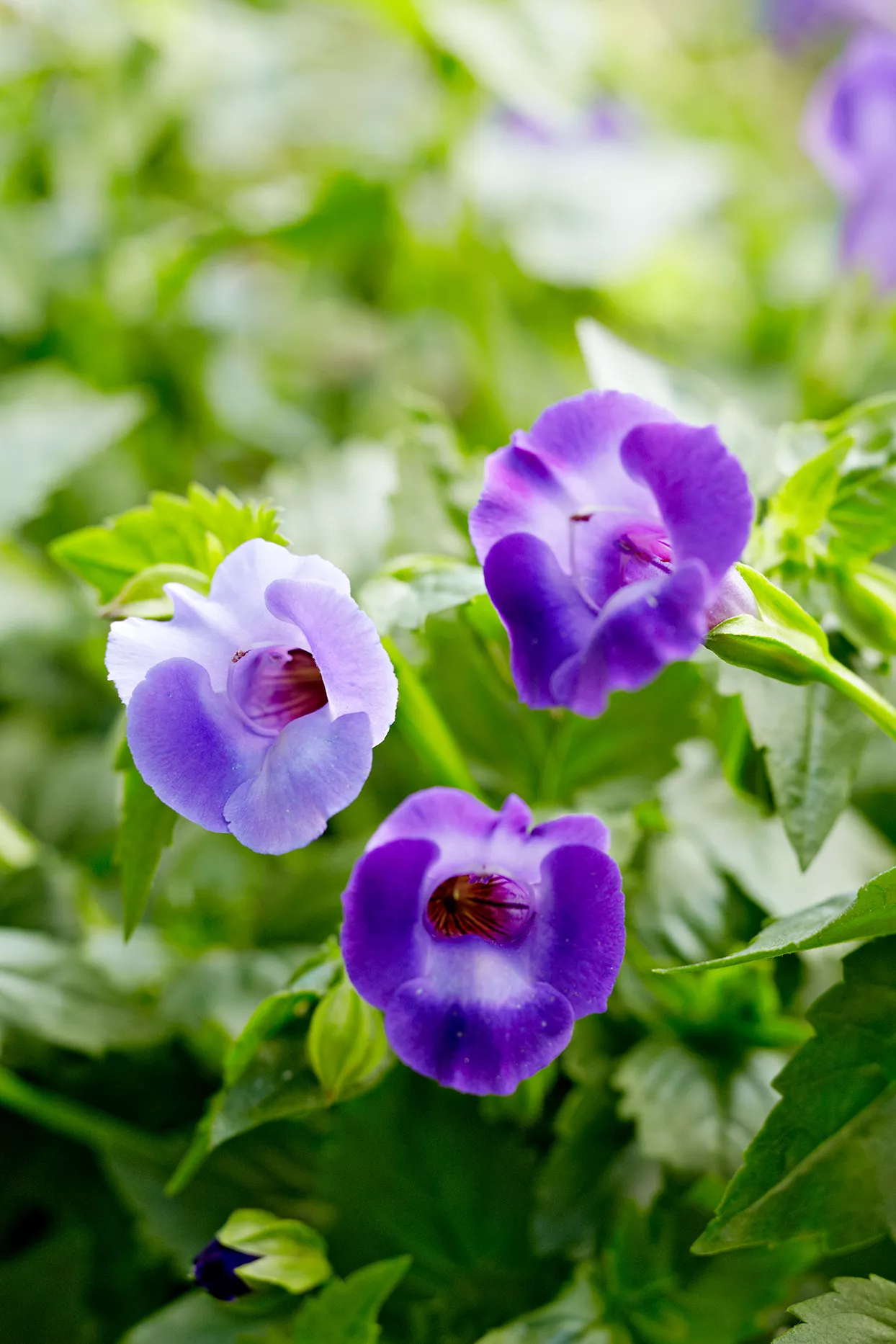
Perennial in its native tropics, wishbone flower is typically grown as an annual. There are upright selections that form neat mounds in mixed beds, and trailing types that are delightful spilling out of container gardens or hanging baskets. Their dainty pink, purple, blue, or white flowers put on a steady show all summer long. It’s a veritable blooming machine.
Name: Torenia fournieri
Growing Conditions: Part shade and moist, well-drained soil
Size: 6 to 16 inches tall, 6 to 24 inches wide
Sweet Alyssum
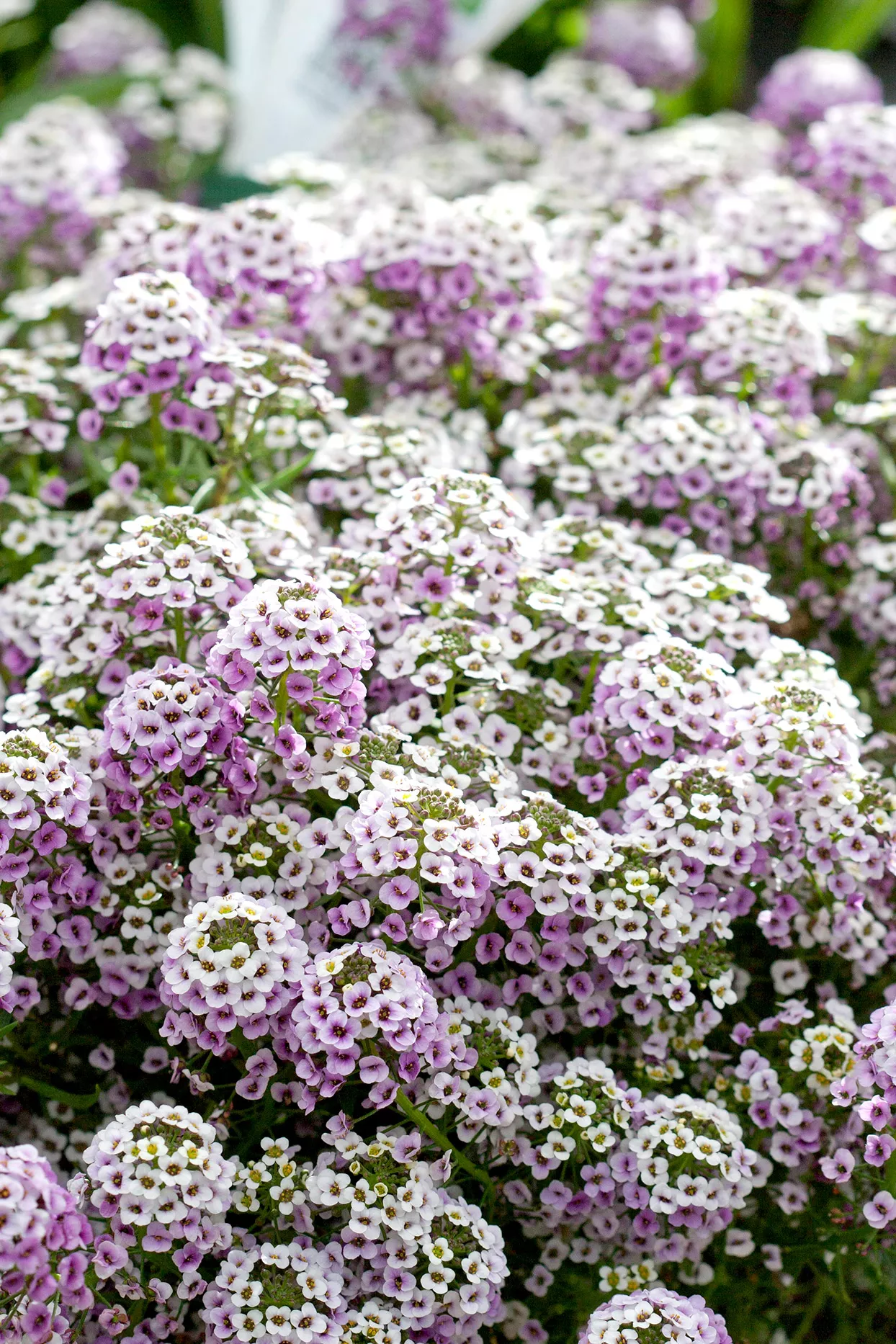
Sweet alyssum is an old-fashioned plant that is usually grown as an annual, although it can sometimes grow as a short-lived perennial. They prefer cooler weather, blooming freely in spring and again in fall, usually taking a break during the heat of summer. They form a carpet-like ground cover with dainty white, pink, or purple flowers well suited to the front edge of a border.
Name: Lobularia maritima
Growing Conditions: Full sun, part sun and moist, well-drained soil
Size: 3 to 10 inches tall, 3 to 6 inches wide
Dusty Miller
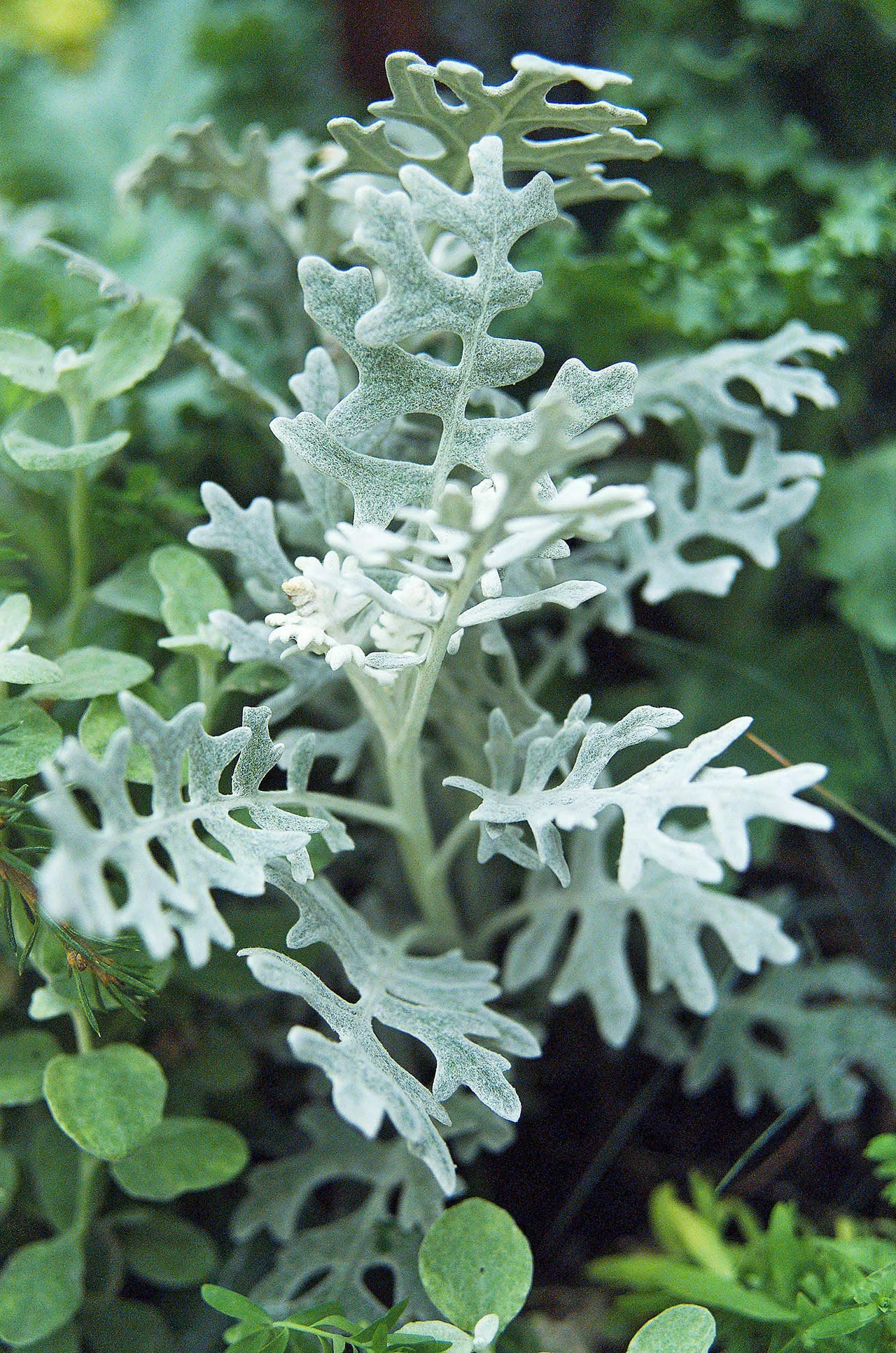
This carefree plant with silvery white leaves provides great contrast with brightly colored flowers and makes a stunning addition to beds and containers. Although perennial in warmer regions, dusty miller is typically grown as an annual. The fine-textured leaves serve as excellent filler in cut flower arrangements.
Name: Jacobaea maritima
Growing Conditions: Full sun to part shade and well-drained soil
Size: 12 to 18 inches tall, 6 to 24 inches wide
This plant can be toxic to pets and humans3 and is quite unappealing to deer as well.
Lantana
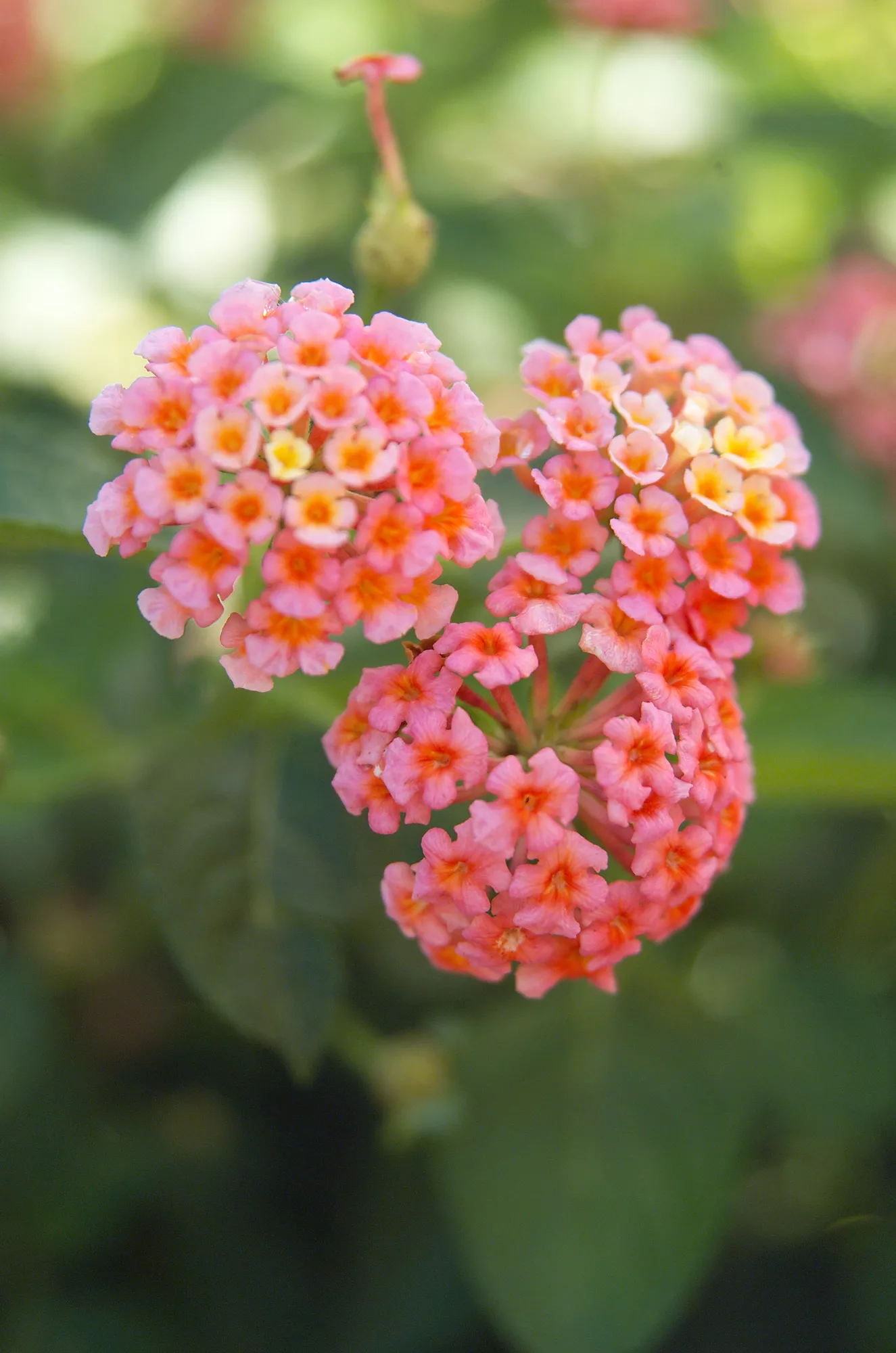
Although lantana is perennial in warm climates, it is commonly grown as an annual. It’s the perfect choice for a sun-filled, hot, dry location because its response to heat is to push out oodles of flowers that are arranged in delicate clusters and come in shades of red, pink, orange, yellow, purple, and white, sometimes sporting multiple hues in a single cluster. Many selections have a trailing habit that’s perfect for spilling over the edge of a wall or container.
Name: Lantana camara
Growing Conditions: Full sun and well-drained soil
Size: 1 to 5 feet tall, 2 to 4 feet wide
Lantana is an invasive plant in California, Florida, Hawaii, and Texas.4 It grows and spreads rapidly in most regions. If you choose to include it in your garden, confine it in beds and deadhead it regularly.
Heliotrope
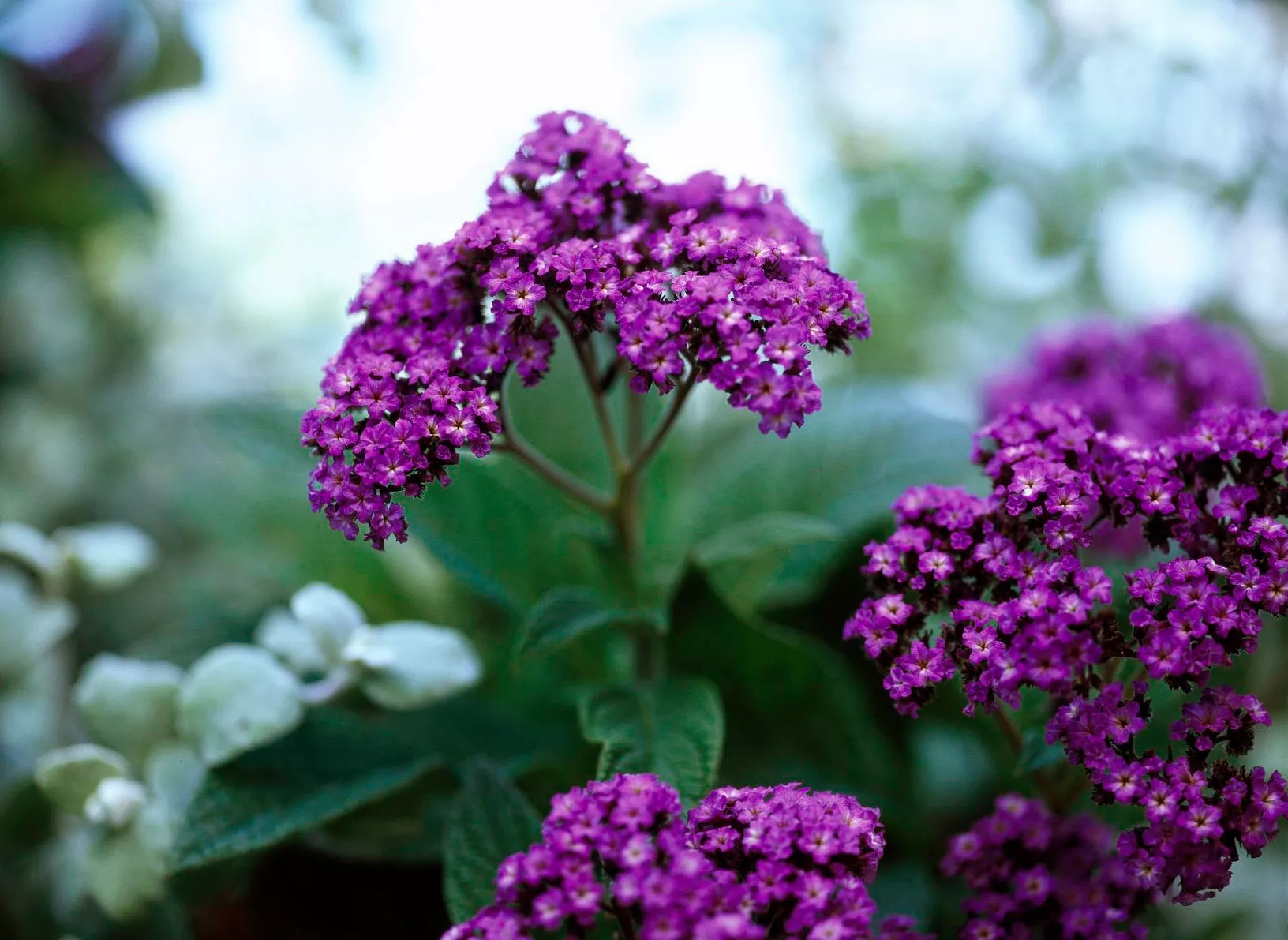
The delightful fragrance of heliotrope flowers makes them an ideal choice for a bed or container garden sited near a door or walkway, where you are most likely to appreciate them. Fortunately, deer generally dislike plants with intense fragrance, so they leave these elegant bloomers alone. Butterflies on the other hand, are attracted to the deep purple or blue flowers that appear in rounded clusters among quilted dark green leaves in summer and fall.
Name: Heliotropium arborescens
Growing Conditions: Full sun to part shade and moist, well-drained soil
Size: 12 to 36 inches tall, 12 to 24 inches wide
Heliotrope is toxic to humans5 and horses6 when eaten in large quantities over an extended period of time.
Signet Marigold
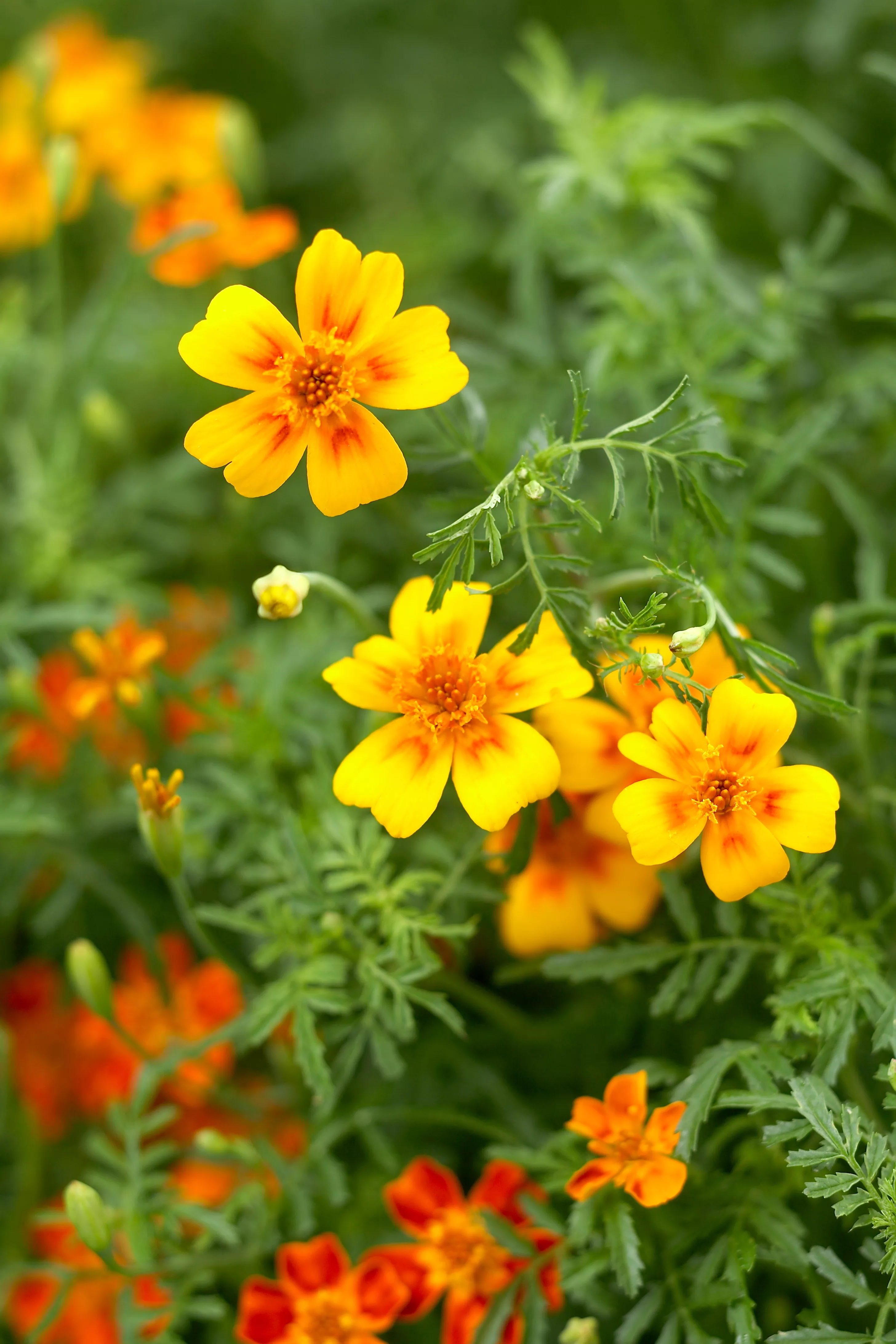
The strong aroma of marigold’s foliage is off-putting to deer, especially the signet types. At 12 to 18 inches tall, these are smaller in stature than the 2- to 3-foot African types but are more easily combined with other sun-loving plants in beds or container gardens. Their lacey foliage sets off the abundant single flowers that are yellow, orange, or red and are often two-toned. They appear from late spring until frost.
Name: Tagetes tenuifolia
Growing Conditions: Full sun and moist, well-drained soil
Size: 8 to 20 inches tall and wide
Persian Shield
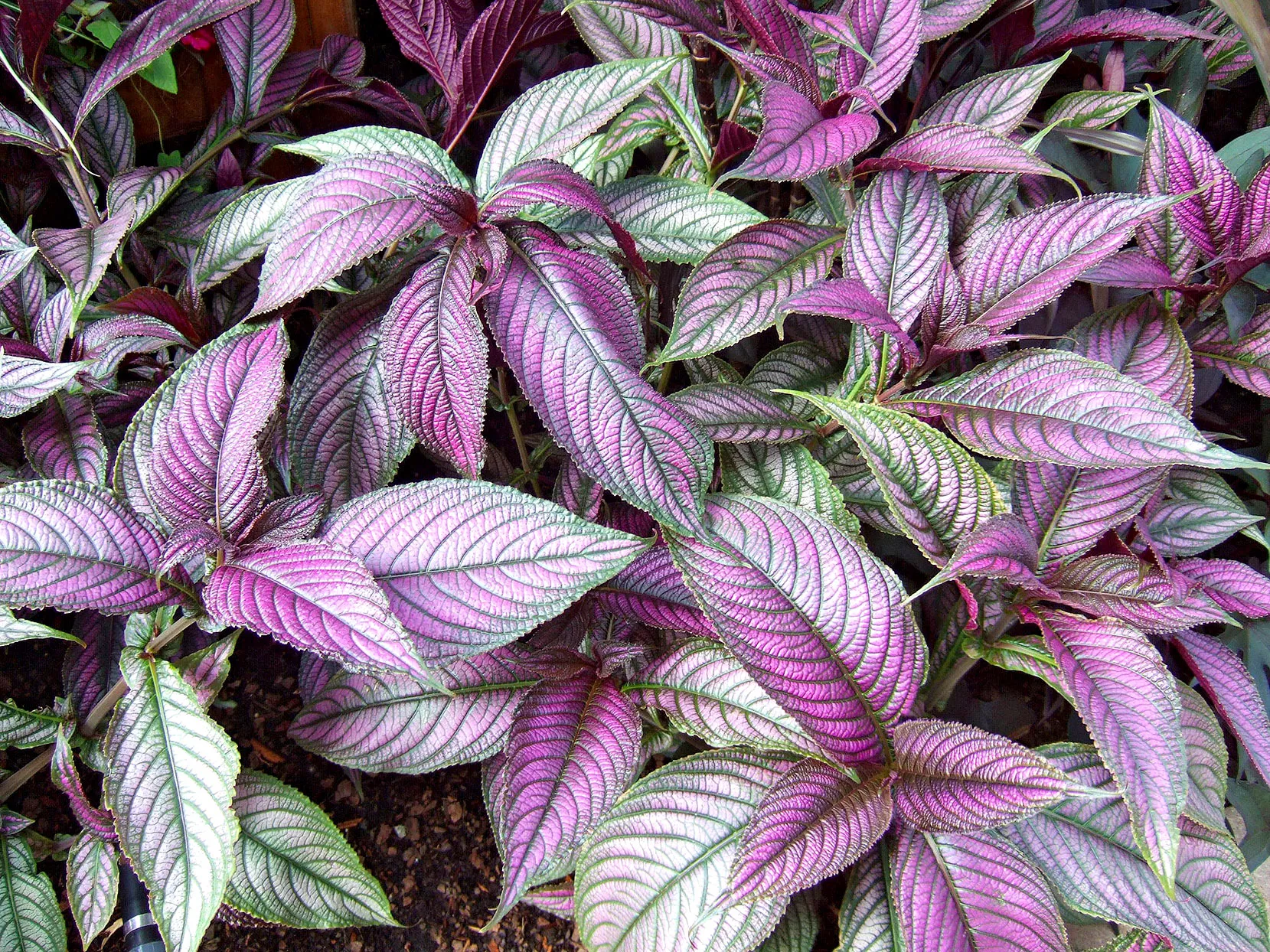
Persian shield has large, iridescent purple and silver leaves that can grow 6 to 8 inches long. It provides great color and textural contrast to brightly hued annual flowers both in beds and containers. They contrast well with yellow or orange marigolds or calendula. A site with dappled sun and lots of regular moisture is ideal, but if it’s too shady, leaves are less brilliantly colored and plants tend to flop over. To encourage a bushier plant and more foliage, pinch out the top of young plants.
Name: Strobilanthes dyerianus
Growing Conditions: Full sun to part shade and well-drained soil
Size: 1 to 4 feet tall, 1 to 3 feet wide
Annual Black-eyed Susan
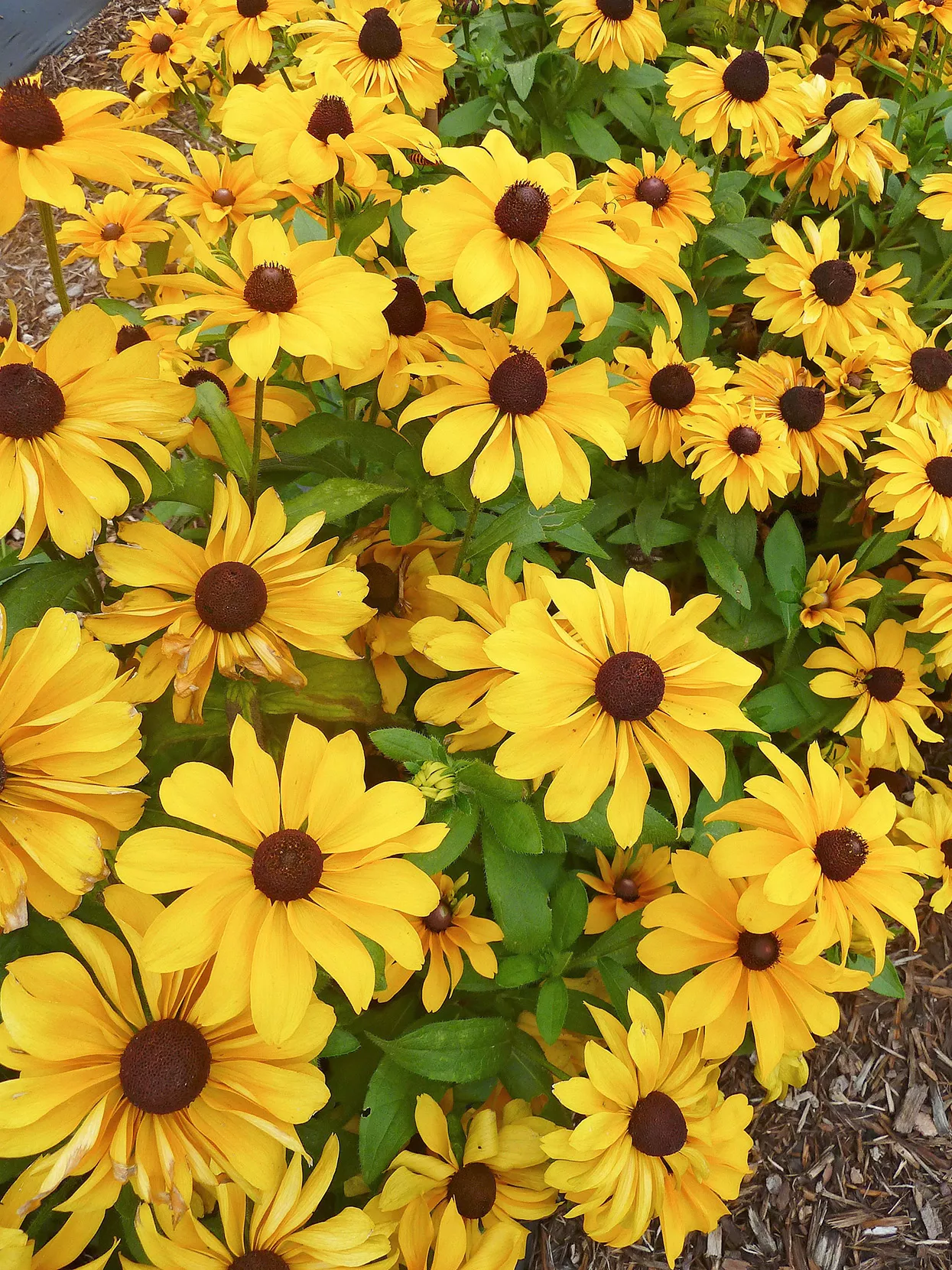
The yellow daisy-like flowers of annual black-eyed Susan light up a sunny garden, persisting through the heat of summer right into fall. They continue to bloom steadily, when many other flowering annuals have faded. Some selections sport dark brown centers while others have green centers. The petals may be yellow, gold, burgundy, or bi-colored. They are good choices for butterfly gardens, mixed borders, and large containers and they often self-sow, coming back year after year from seed. The coarse hairs on their leaves and stems make them deer resistant.
Name: Rudbeckia
Growing Conditions: Full sun and well-drained soil
Size: 1 to 3 feet tall and wide
Verbena
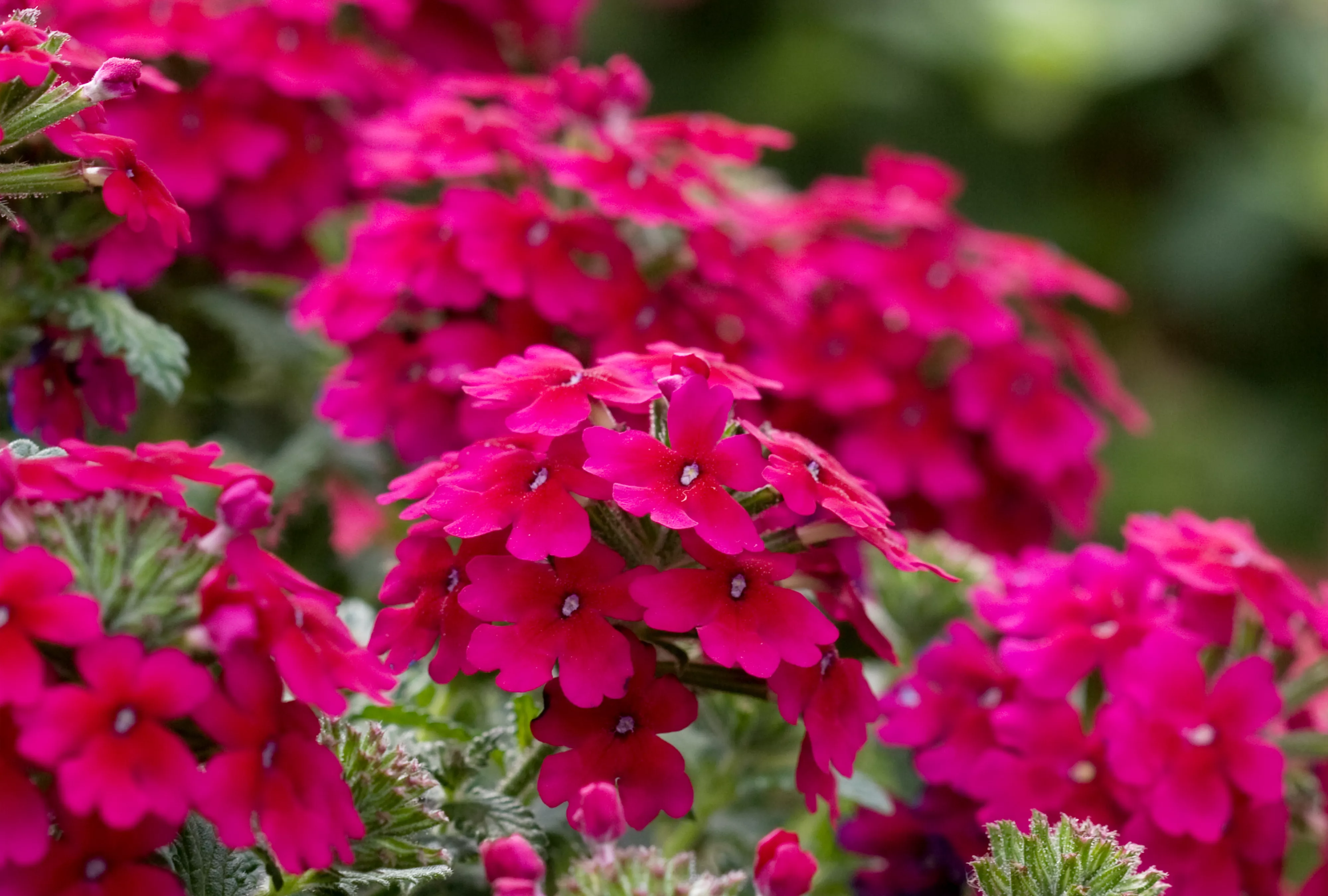
Verbena bears clusters of tiny star-shaped flowers throughout summer and into fall, attracting a wide variety of pollinators to your garden. Selections may be mounding or trailing. They are easy to grow as long as they get lots of sun (at least 8 hours) and regular watering. Cascading varieties are terrific additions to window boxes, hanging baskets, and patio containers where they can spill over the edge. This drought tolerant plant is perennial in warm climates but is usually grown as an annual.
Name: Verbena x hybrida
Growing Conditions: Full sun and moist, well-drained soil
Size: 6 to 12 inches tall, 12 to 18 inches wide
